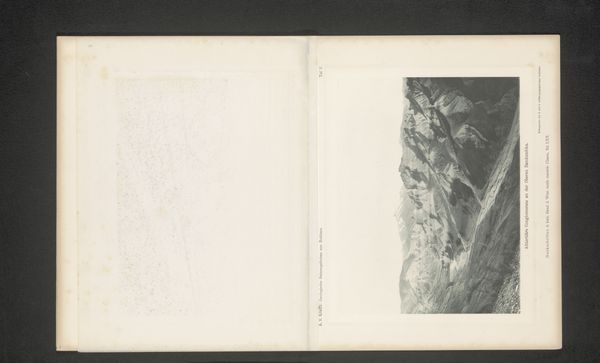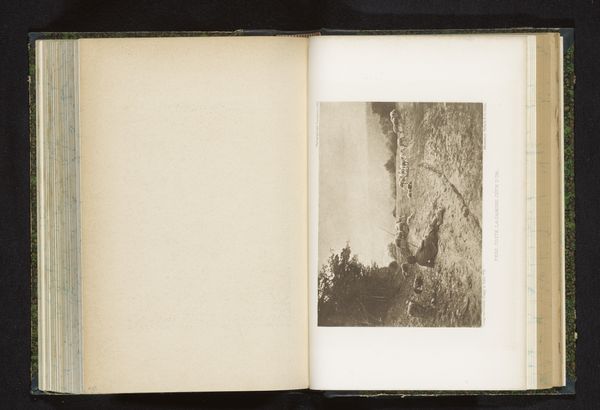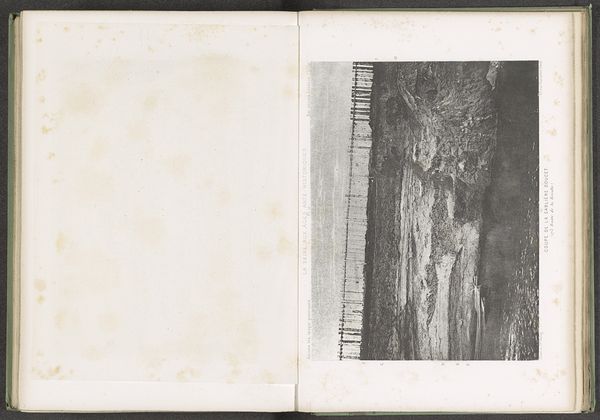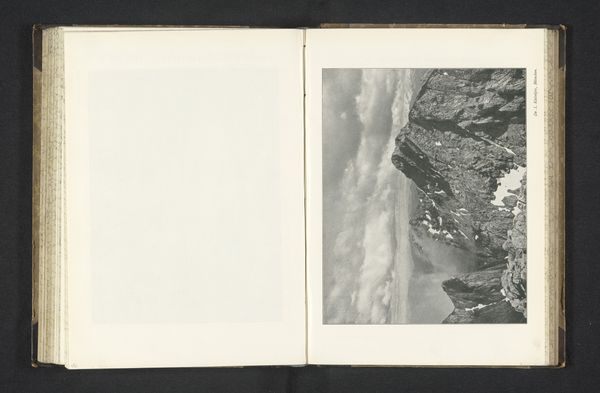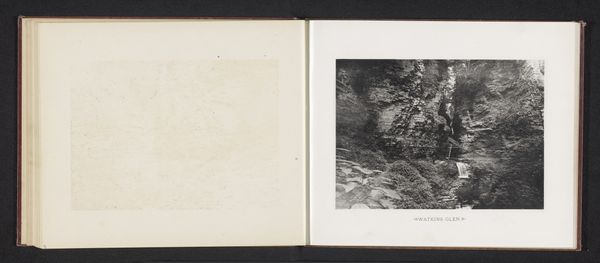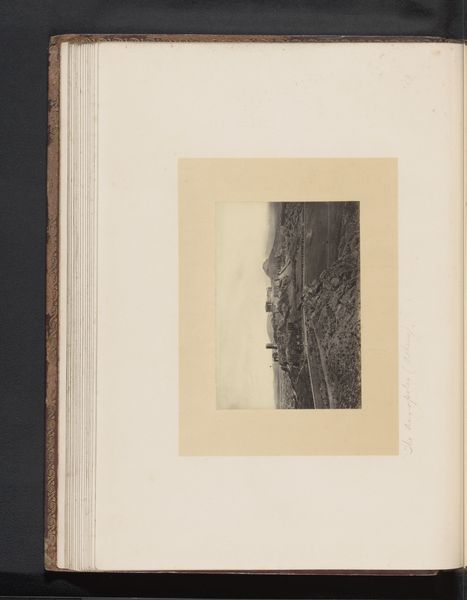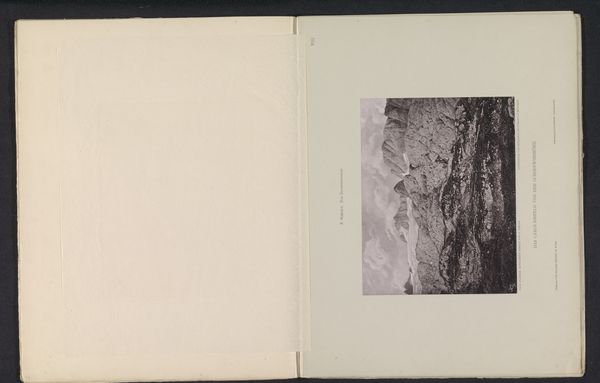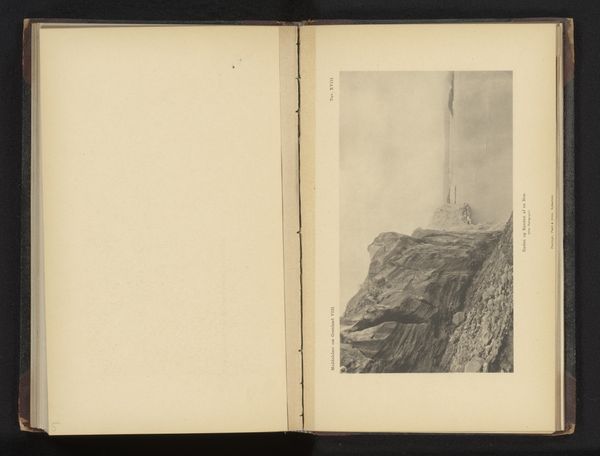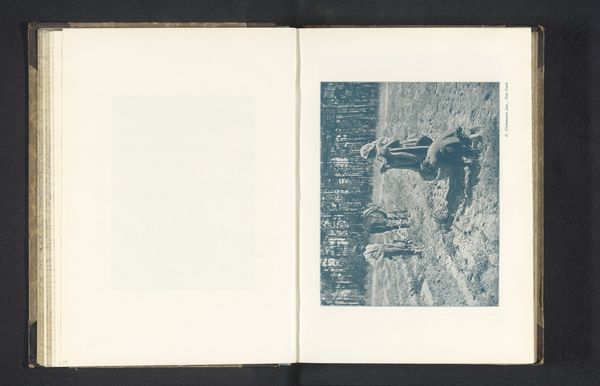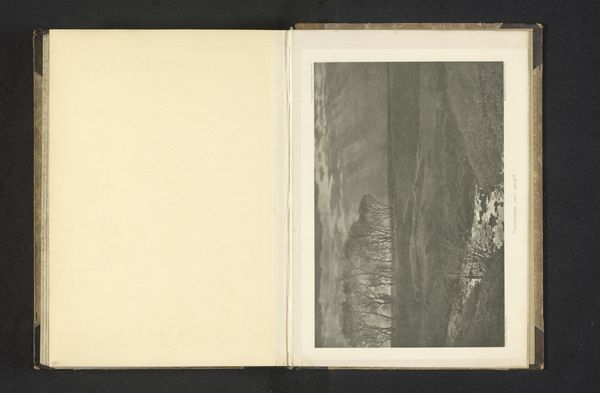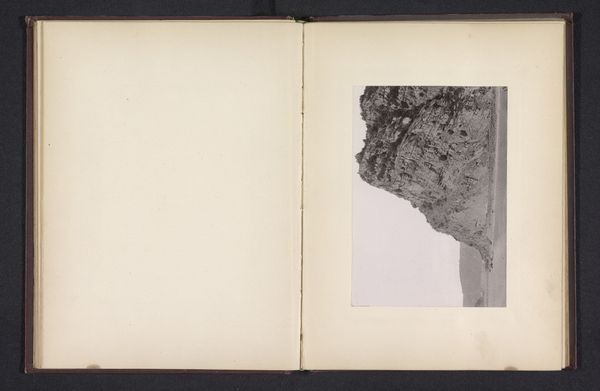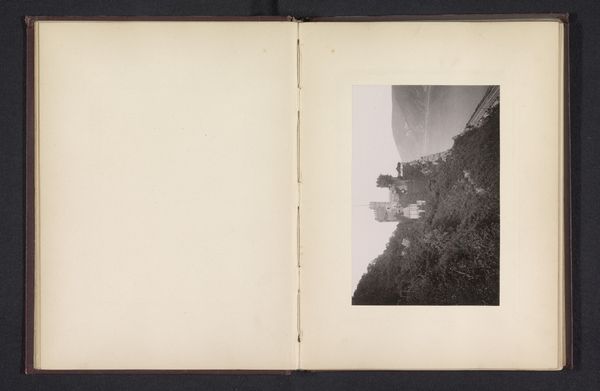
print, paper, engraving
#
aged paper
#
toned paper
#
pale palette
#
ink paper printed
# print
#
landscape
#
paper
#
engraving
Dimensions: height 195 mm, width 254 mm
Copyright: Rijks Museum: Open Domain
Curator: Immediately, I see strata—a geological, visual, and textual layering here. Editor: Yes, the muted tones lend a sense of timelessness; the composition, however, feels strangely…stark. Is that rock? Curator: Indeed. This is "Dwarsdoorsnede van aardlagen in het stroomgebied van de Seine," or, “Cross-section of soil layers in the Seine river basin,” a print created before 1869. I believe it’s an engraving. The processes to create the print—etching and pressing—would be quite laborious. And paper being, at the time, quite an active trade market. Editor: Laborious indeed! It invites a critical inquiry into whose labor extracted the very materials depicted here, from the earth to the ink to the paper itself, and the social conditions in the pre-industrial era in which the work would have been consumed. Were these images widely distributed? Or created more for specialized trades? Curator: We’re certainly looking at the burgeoning of geological science as a field. What I find striking is how an image like this becomes a commodity—information circulated, knowledge visualized. Editor: Absolutely, and whose knowledge? Early geology was, to some extent, entangled with colonialism – charting territories, extracting resources. What did representations like these enable, or make permissible? Curator: We see then not simply documentation, but the making of a very particular viewpoint on landscape and value. Even the way the layers are depicted suggests extraction and examination. Editor: A cross-section, like this one, certainly isolates. To extract not only the literal earth here for this engraving, but a visual fragment for study as well. I would say even now the impact is unsettling in that context. Curator: It forces one to really confront materiality. The engraving itself becomes a trace of resource exploitation and early methods of study. Food for thought on nature, industry, and image-making. Editor: Yes, it certainly calls into question the gaze that dispassionately renders geological formations. Layers of time and power.
Comments
No comments
Be the first to comment and join the conversation on the ultimate creative platform.
